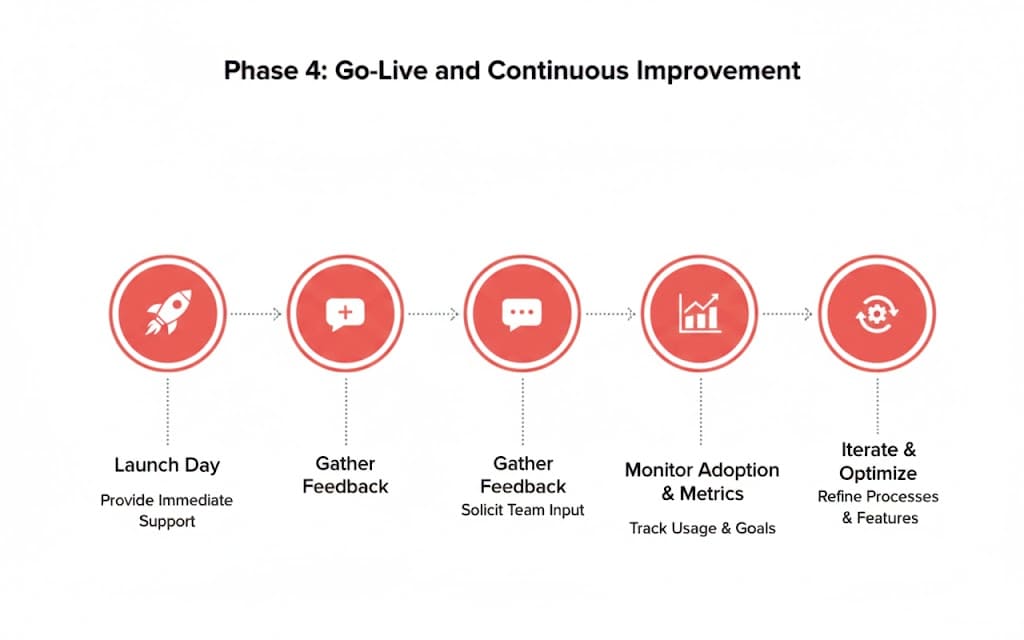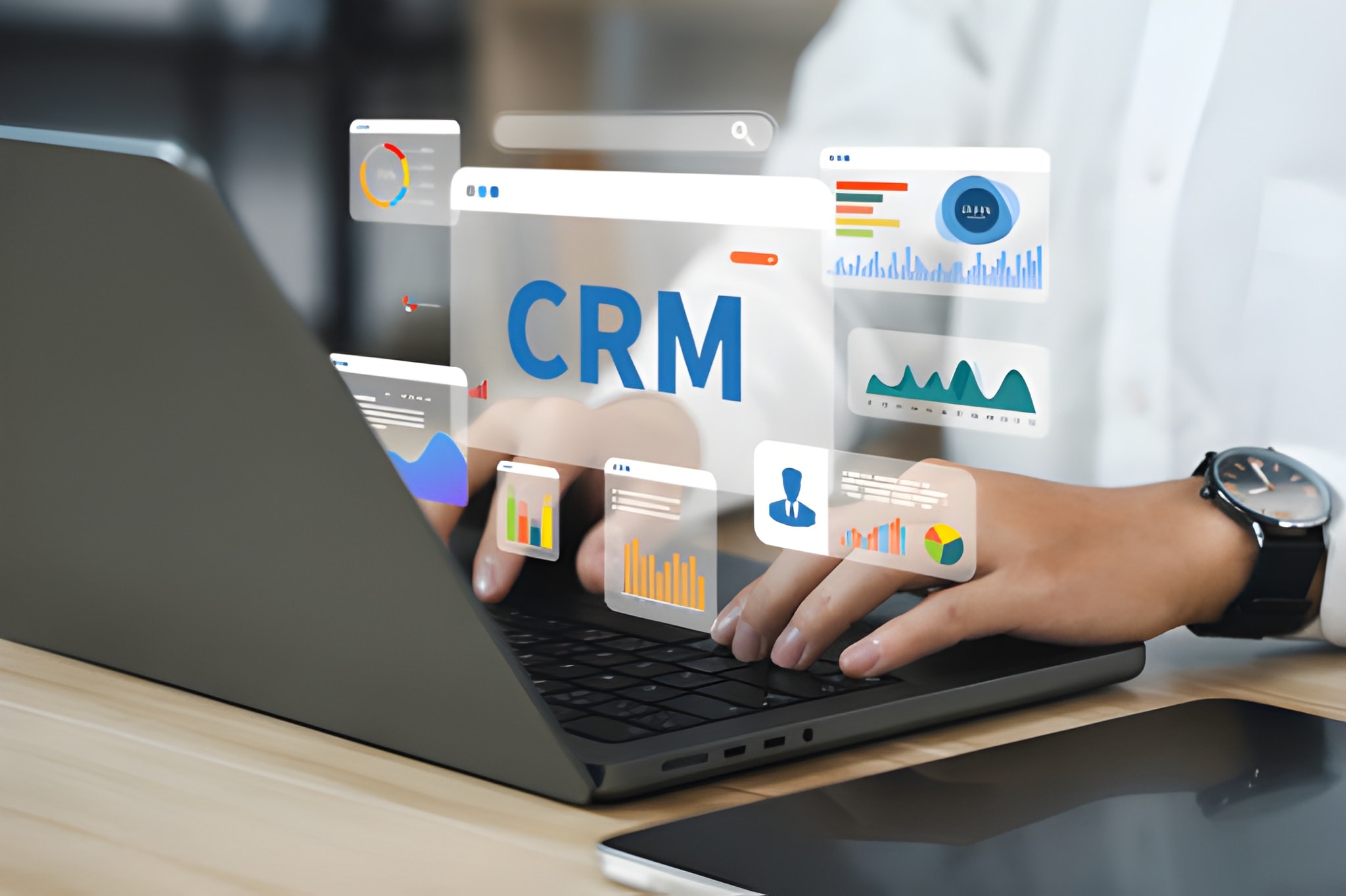Starting with Salesforce is a powerful choice for your business. However, a successful rollout needs more than just a license; it requires a solid plan. This Salesforce implementation checklist is made for business leaders like you. It gives you a clear roadmap to follow. As a result, you can avoid common problems and get the best return on your investment right away.
Why a Salesforce Implementation Checklist is Crucial for Your ROI
For a small business, every investment needs to show clear returns. A rushed Salesforce rollout often leads to problems. For instance, your team may not use it, your data can become a mess and the system ends up making things harder, not easier. According to Nucleus Research, the average ROI for CRM is $8.71 for every dollar spent. But, you can only achieve this with a structured plan.
Think of a complete Salesforce implementation checklist as your game plan. It makes sure your CRM setup is a true business upgrade, not just a tech project. Furthermore, it connects the platform’s power directly to your goals, like closing sales faster or keeping customers happy. By following a checklist, you lower project risks, control costs and build a system your team will actually want to use. Ultimately, it’s the key to turning a powerful tool into a real competitive advantage.
The Definitive Salesforce Implementation Checklist for 2025
We’ve broken down the process into clear, actionable phases. This guide will lead you to a successful launch and long-term growth.
Phase 1: Discovery and Strategic Planning
First, you need to lay the groundwork. This phase is all about asking “why” before you figure out “how.” Getting this right is essential for success.
Set Your Foundation
- Define Your Business Goals: To begin, ask what you want to achieve. Do you want to shorten your sales cycle by 20%? Or maybe increase lead conversion by 15%? You should quantify your goals so you can measure success later on.
- Map Your Core Processes: Next, write down your current sales, service and marketing workflows. Be sure to identify the pain points you want the CRM setup to fix. This is a great chance to simplify your processes.
- Identify Key Stakeholders: Then, put together a core team. This should include executives, department heads and some of your top users. Getting their support from the start is vital for adoption across the company.
- Assess Your Data: Also, look at your current customer data. Where is it? Is it clean? You need a plan for data cleanup and migration early on, because putting bad data into a new system will only cause problems.
- Engage an Expert Partner: Finally, unless you have a Salesforce expert on your team, you should explore Salesforce Consulting. An experienced partner can help you avoid costly mistakes and see a return on your investment much faster.
Phase 2: The Core CRM Setup and Customization
With a solid plan, it’s time to shape the platform to fit your business needs.
- User and Permission Setup: First, define roles and permissions for everyone on your team. This step is important for security because it ensures people only see the data they need for their job.
- Data Migration: Next, it’s time to move your data. You should start with a small test batch to make sure everything works correctly before moving all of your records.
- Core Customization: This is where you make Salesforce your own. For example, you can adjust standard fields or add custom ones to capture unique information about your business. This is a vital part of a good CRM setup.
- Initial Automation: In addition, you can implement some basic Salesforce automation tips. This could be sending emails for new leads or creating follow-up tasks for deals. This is an easy way to Automate Business Processes right away.
Phase 3: Integration, Testing and Training
This phase makes sure Salesforce works well with your other tools and that your team is ready.
Connecting Your Tools and Team
- System Integration: A great CRM connects to your other tools. For this reason, you should plan for a Salesforce Integration with your email, accounting and website platforms. This creates one single source of truth for all customer data.
- User Acceptance Testing (UAT): Before you go live, have your key team members test the system. They should walk through their daily tasks to make sure everything works as planned.
- Develop Training Materials: In addition, you should create simple training guides for each role. Focus on how the system benefits them directly to build excitement.
- Conduct Team Training: Finally, hold training sessions where your team can get hands-on experience. This practical training is much more effective than just showing them features.
Phase 4: Go-Live and Continuous Improvement
Your launch is just the beginning. The last part of your Salesforce implementation checklist is all about making things even better over time.
- Launch Day: It’s time to go live! Make sure you have support ready to help users with any questions they have.
- Gather Feedback: After you launch, ask your team for feedback. What is working? What is confusing? This information is incredibly valuable for making improvements.
- Monitor Adoption and Metrics: Also, use Salesforce reports to track how often people are logging in and if they are using the system correctly. Most importantly, check if you are moving closer to the business goals you set in Phase 1.
- Iterate and Optimize: Your business will change and so should Salesforce. Therefore, you should plan regular reviews to add new Salesforce automation tips and improve your processes. For more advanced needs, you can use our Salesforce Development Services to build custom solutions.

Our Salesforce Implementations in Action: Case Studies
Case Study 1: Streamlining Sales for a B2B Tech Firm
- The Challenge: A software company was using spreadsheets to manage sales. As a result, they were losing leads and could not create accurate forecasts.
- Our Solution: We implemented Salesforce Sales Cloud for them. Our process included mapping their sales stages, automating lead assignments and connecting their website forms to Salesforce.
- The Result: Consequently, their lead response time improved by 70%, their sales forecasts became 95% accurate and the team closed 22% more deals in six months.
Case Study 2: Unifying Customer Data for a Retail Business
- The Challenge: A retailer had customer data in many different places. Because of this, they couldn’t get a single view of their customers.
- Our Solution: We set up Salesforce as their central data hub. The project required a complex Salesforce Integration with all their systems to create a unified customer profile.
- The Result: As a result, the company got a 360-degree customer view. This led to a 35% increase in repeat business and happier customers overall.
Our Salesforce Technology and Integration Stack
When you partner with us, you get a team that knows the entire Salesforce ecosystem. We make sure your CRM setup is powerful, scalable and secure.
- Core Platforms: Salesforce Sales Cloud, Service Cloud, Marketing Cloud, Experience Cloud
- Customization & Development: Apex, Visualforce, Lightning Web Components (LWC)
- Integration Tools: MuleSoft, Zapier, Custom REST/SOAP APIs
- Data Management: Salesforce Data Loader, Dataloader.io, Jitterbit
Conclusion
Your Salesforce implementation is a key moment for your business. By following a clear Salesforce implementation checklist, you go from a simple software install to a real business upgrade. This plan ensures your team uses the system, your CRM setup is clean and you see a measurable return. At Wildnet Edge, we believe in a future-proof strategy. Specifically, our AI-first approach means we build a scalable foundation that grows with you. This allows you to use data and automation to stay ahead of the competition.
FAQs
While it varies, a well-planned Salesforce Implementation delivers great returns. For instance, with better sales productivity and customer retention, most small businesses see a positive ROI within 12-18 months. The key is to connect the CRM setup to your business goals from the start.
Generally, a basic implementation can take 4 to 8 weeks. However, more complex projects with a lot of data or custom integrations can take 3 to 6 months. Our checklist helps create a clear timeline so you know what to expect.
Usually, the biggest hidden costs are data cleanup, user training and integrations. Many businesses don’t budget enough time or money for these steps. For this reason, our discovery phase helps identify these costs upfront.
While your IT team is valuable, Salesforce implementation requires special skills. Certified experts understand the platform’s best practices and can help you avoid common problems. In other words, it’s a business project, not just an IT task.
User adoption is our main goal. To achieve this, we involve users from the start, build an intuitive system for them and provide hands-on training. We make Salesforce a tool that helps them succeed.
Our AI-first approach means we build your Salesforce system with the future in mind. We make sure your CRM setup collects clean data. This data then becomes the foundation for powerful AI tools like Einstein for predictive scoring and advanced Salesforce automation tips.
The first step is a simple discovery call. In short, we’ll talk about your business goals, your challenges and how a strategic Salesforce Implementation can help. This allows us to see if we are the right partner for you.

Nitin Agarwal is a veteran in custom software development. He is fascinated by how software can turn ideas into real-world solutions. With extensive experience designing scalable and efficient systems, he focuses on creating software that delivers tangible results. Nitin enjoys exploring emerging technologies, taking on challenging projects, and mentoring teams to bring ideas to life. He believes that good software is not just about code; it’s about understanding problems and creating value for users. For him, great software combines thoughtful design, clever engineering, and a clear understanding of the problems it’s meant to solve.
 sales@wildnetedge.com
sales@wildnetedge.com +1 (212) 901 8616
+1 (212) 901 8616 +1 (437) 225-7733
+1 (437) 225-7733































